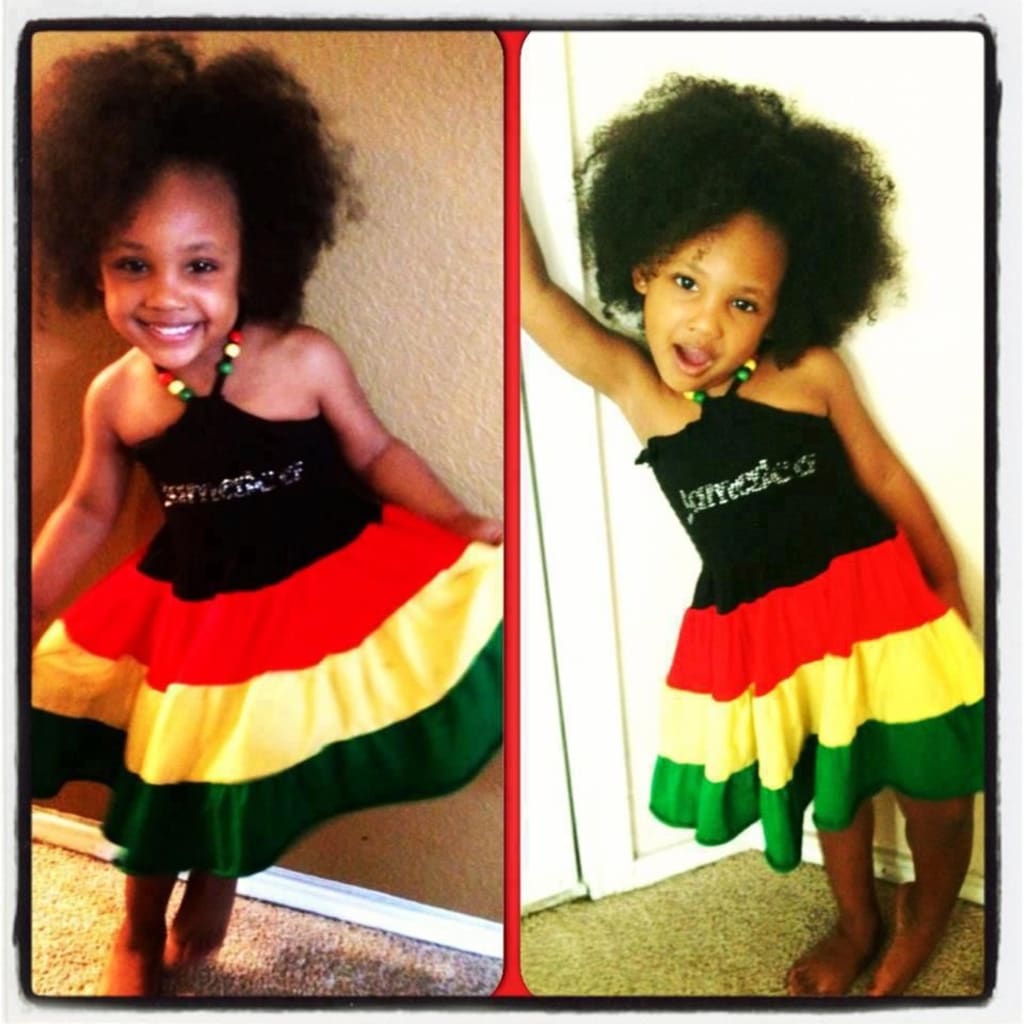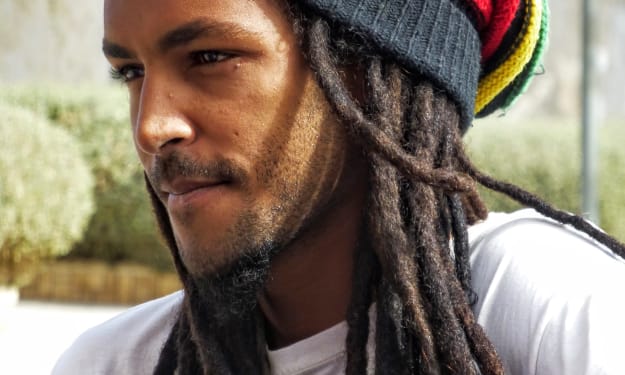Rastafarian Clothing for Kids: Teaching Cultural Awareness and Diversity Through Fashion
Fostering Community and Self-Expression Through Rastafarian Clothing for Kids

Rastafarianism is a spiritual movement that originated in Jamaica in the 1930s. It is based on the belief that Emperor Haile Selassie I of Ethiopia is the messiah and that black people are the true Israelites. The Rastafarian movement has had a significant impact on Caribbean culture, inspiring music, art, and fashion.
Teaching children about cultural awareness and diversity is crucial in today’s globalized world. By introducing children to different cultures and traditions, we can promote empathy, understanding, and respect. Rastafarian clothing is an excellent way to teach children about the cultural significance of clothing and the symbols and colors associated with Rastafarianism.
In this blog post, we will provide a brief overview of Rastafarianism and its importance in Caribbean culture. We will also explore the significance of teaching children about cultural awareness and diversity and the positive impact it can have on their lives. Finally, we will delve into the world of Rastafarian clothing for kids and its cultural significance.
History of Rastafarian Clothing
Rastafarian clothes has a rich history and cultural significance that is deeply rooted in Jamaican culture. The origins of Rastafarian clothing can be traced back to the 1930s when the movement first began to gain popularity in Jamaica. At that time, Rastafarians were often ostracized from mainstream society and were viewed as rebels and outcasts.
The clothing worn by Rastafarians during this time was a reflection of their beliefs and values. They embraced African traditional dress, including colorful robes, head wraps, and other clothing items made from natural materials such as cotton, linen, and wool. These styles were reminiscent of traditional African clothing and served as a way for Rastafarians to connect with their African roots.
The symbolism behind Rastafarian clothing is also an essential aspect of its cultural significance. The colors used in Rastafarian clothing, such as red, gold, and green, hold special meaning. Red represents the blood of the martyrs, gold symbolizes the wealth of Africa, and green signifies the beauty and vegetation of the homeland. These colors are often combined in the form of stripes or patches to create the iconic Rastafarian flag.
Another significant symbol in Rastafarian clothing is the lion, which is considered a sacred animal in Rastafarianism. The lion represents strength, courage, and righteousness and is often depicted on clothing items such as T-shirts and hats.
Over the years, Rastafarian clothing has become a popular fashion trend, with designers and retailers around the world incorporating Rastafarian symbols and colors into their designs. However, it is important to note that Rastafarian clothing is not just a fashion statement; it is a reflection of the movement’s values and beliefs.
Benefits of Teaching Kids About Rastafarian Clothing and Culture
Teaching children about Rastafarian clothing style and culture has numerous benefits that go beyond just learning about a particular group or tradition. Here are some of the key benefits:
Encouraging cultural awareness and diversity: Exposing children to different cultures and traditions is an essential step in promoting cultural awareness and diversity. By teaching kids about Rastafarian clothing and culture, parents and educators can encourage children to appreciate and respect different ways of life. This helps them develop empathy, understanding, and acceptance of others.
Promoting self-expression and creativity through fashion: Rastafarian clothing is known for its colorful and vibrant designs, which can inspire children to express themselves creatively through fashion. By introducing kids to Rastafarian clothing and its cultural significance, parents and educators can encourage children to think outside the box and embrace their individuality.
Fostering a sense of community and belonging: Learning about Rastafarian clothing and culture can also help children feel a sense of belonging and community. By understanding the symbolism and values behind Rastafarian clothing, kids can connect with a larger community and feel a sense of pride in their heritage or culture.
Providing an opportunity for cross-cultural learning: Teaching children about Rastafarian clothing and culture provides an opportunity for cross-cultural learning. This can help break down stereotypes and promote mutual understanding and respect among different cultures.
By introducing kids to different cultures and traditions, parents and educators can help them become more open-minded and accepting of others, which is essential in today’s diverse world.
Types of Rastafarian Clothing for Kids
Rastafarian clothing for kids is available in various styles and designs, all of which reflect the movement’s values and beliefs. Here are some of the common types of Rastafarian clothing for kids:
T-shirts and tank tops: T-shirts and tank tops featuring Rastafarian symbols and messages are popular among kids. These can be worn as everyday casual wear or as part of a Rastafarian-inspired outfit.
Dresses and skirts: Dresses and skirts with vibrant colors and prints are a popular choice for girls. These can be paired with accessories such as head wraps or hats to complete the Rastafarian look.
Hats, head wraps, and accessories: Hats and head wraps featuring Rastafarian colors and patterns are popular accessories for both boys and girls. Other accessories such as bracelets, necklaces, and earrings can also feature Rastafarian symbols and colors.
Shoes and sandals: Shoes and sandals with Rastafarian-inspired designs are another popular option for kids. These can feature the iconic red, gold, and green colors or other Rastafarian symbols such as the lion.
It is important to note that Rastafarian clothing is not just about the style; it is also about the cultural significance behind the symbols and colors. Parents and educators can use Rastafarian clothing as an opportunity to teach children about the movement’s values and beliefs and encourage them to embrace cultural diversity and awareness.
Tips for Choosing Rastafarian Clothing for Kids
When it comes to choosing Rastafarian clothing for kids, there are several factors to consider. Here are some tips to help parents and educators make the best choices:
Select age-appropriate styles and designs: Rastafarian clothing comes in a range of styles and designs, but it is essential to choose age-appropriate clothing for kids. Parents should opt for clothing that is comfortable, functional, and allows for ease of movement. It is also important to consider the child’s age and the appropriateness of the clothing for various occasions.
Choose high-quality, sustainable clothing from ethical brands: It is important to choose high-quality, sustainable clothing that is made from eco-friendly materials and supports ethical manufacturing practices. By choosing ethical Rasta clothing stores, parents can promote sustainable and responsible consumption while also supporting companies that value social responsibility and environmental sustainability.
Incorporate Rastafarian clothing into everyday wear and special occasions: Rastafarian clothing can be worn as part of everyday casual wear or as special occasion clothing. Parents and educators can incorporate Rastafarian clothing into children’s wardrobes, ensuring that the clothing is versatile and appropriate for various occasions.
Consider the cultural significance of the clothing: Rastafarian clothing is not just about the style; it also reflects the movement’s values and beliefs. Parents and educators should consider the cultural significance of the clothing and use it as an opportunity to teach children about Rastafarian culture, values, and beliefs.
Choosing Rastafarian clothing for kids requires careful consideration of factors such as age-appropriate styles, high-quality and sustainable materials, versatility, and cultural significance. By making informed choices, parents and educators can ensure that children wear clothing that reflects their values, promotes cultural awareness and diversity, and supports responsible consumption.
Ways to Teach Kids About Rastafarian Clothing and Culture
Teaching kids about Rastafarian clothing and culture is an important step towards promoting cultural awareness and diversity. Here are some ways to teach kids about Rastafarian clothing and culture:
Reading books and stories about Rastafarianism and Caribbean culture: Parents and educators can introduce kids to Rastafarian culture and beliefs by reading books and stories that explore the movement’s history, values, and symbols. These books can be found in libraries, bookstores, or online.
Watching documentaries and films about the Rastafarian movement: Documentaries and films about the Rastafarian movement can provide an engaging and informative way to teach kids about Rastafarian culture. They can be found on streaming services or in video stores.
Participating in cultural events and celebrations: Parents and educators can also involve kids in cultural events and celebrations, such as reggae music festivals or Caribbean heritage events. These events provide an opportunity to learn about Rastafarian culture and its significance in Caribbean society.
Encouraging children to express themselves through art and music: Art and music are an important part of Rastafarian culture, and parents and educators can encourage kids to express themselves through these mediums. They can be encouraged to create artwork that features Rastafarian symbols and colors, or to learn how to play a musical instrument such as the guitar or drums.
Promoting cultural diversity and awareness: Above all, parents and educators should promote cultural diversity and awareness in their children. They can encourage kids to embrace different cultures and traditions, to be respectful of other people’s beliefs and values, and to celebrate diversity as a source of strength and unity.
By introducing kids to Rastafarian culture, parents and educators can help them appreciate the beauty and richness of different cultures and traditions.
Conclusion
Teaching kids about Rastafarian clothing and culture is an important way to promote cultural awareness and diversity. By introducing children to the history, symbolism, and values of the Rastafarian movement, parents and educators can help them appreciate the beauty and richness of different cultures and traditions.
Parents and educators can take steps to promote cultural awareness and diversity through fashion and education. This can involve choosing high-quality, sustainable clothing from ethical brands, encouraging artistic expression and self-expression through fashion, and participating in cultural events and celebrations.
Furthermore, the positive impact of Rastafarian clothing on children’s self-esteem and confidence cannot be overstated. By allowing kids to express themselves through fashion and introducing them to different cultures and traditions, parents and educators can help build a sense of community, belonging, and pride in their cultural heritage.
In conclusion, let us all take responsibility to promote cultural awareness and diversity among our children, and to encourage them to embrace different cultures and traditions as a source of strength and unity.
About the Creator
Enjoyed the story? Support the Creator.
Subscribe for free to receive all their stories in your feed. You could also pledge your support or give them a one-off tip, letting them know you appreciate their work.






Comments
There are no comments for this story
Be the first to respond and start the conversation.